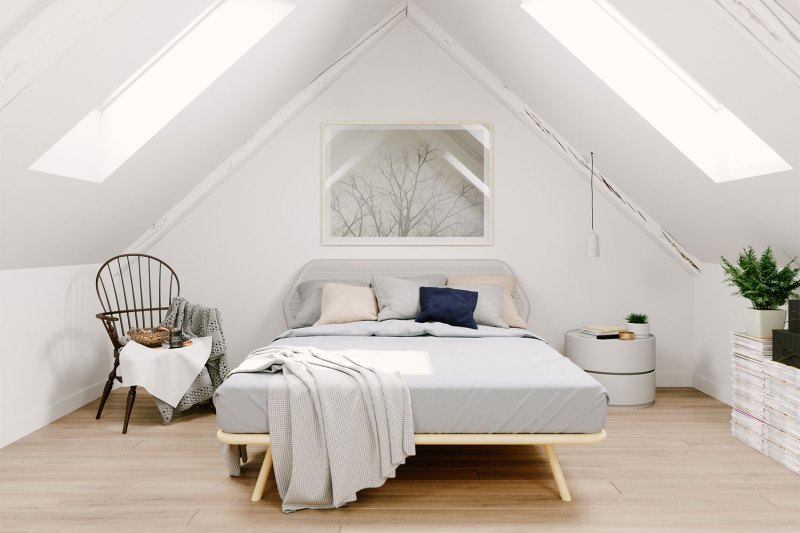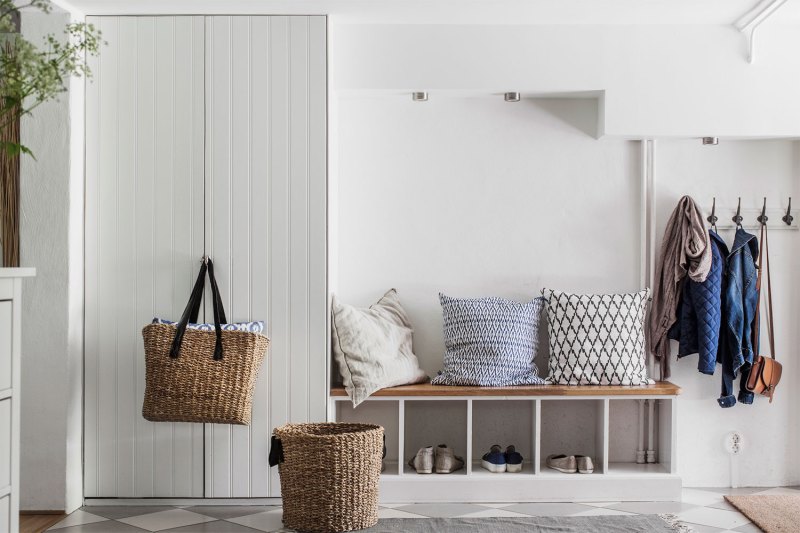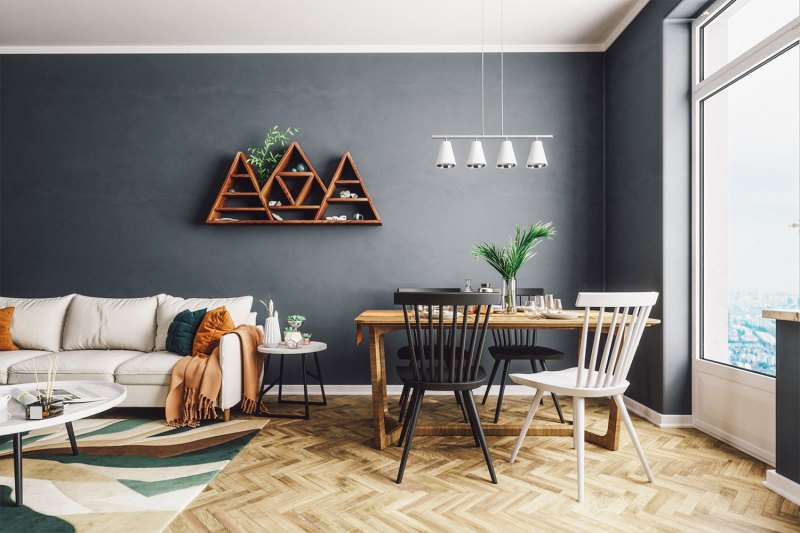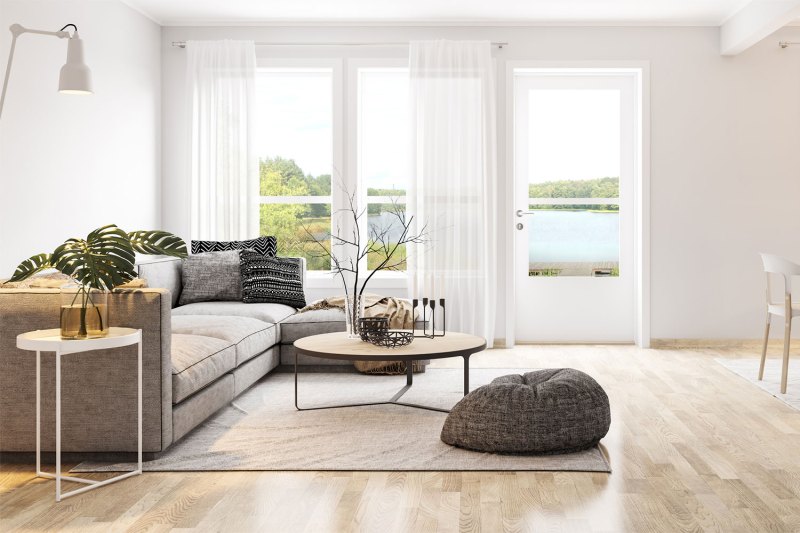Your environment plays a huge role in your overall health. Not just physically, but emotionally and spiritually as well. With the arrival of the COVID-19 pandemic forcing people to spend more time than ever at home, there has been a trend toward creating a calm, healthy space. One style over all others supports this — Scandinavian. Whether you are still working from home or not, this is a great look to implement if you’re seeking a serene escape from the outside world.
History of Scandinavian Style
The Scandinavian movement sprang from the Modernism of the 1950s. Thanks to the Lunning Prize and the traveling exhibition “Design in Scandinavia,” the work of Danish, Norwegian, and Swedish artists began to be seen by American audiences. With its clean lines, soothing nature-inspired color palettes, and simple furnishings, it was a refreshing change from the overly decorative looks of Post-war design.
The core principles that define Scandinavian design haven’t changed since it first took hold. The emphasis has always been on creating a nature-inspired, minimalist space that focuses on function and simplicity. Furniture and flooring is light wood, the color palette is muted tones of whites, tans, and grays, and touches of greenery are added to literally bring the outdoors in.
If the term “cleanliness is next to godliness” is true, then Scandinavian design is a divine look. Visual clutter can lead to mental clutter, so it is tucked away or not even allowed to build up in the first place.
One of the most important keys to this style is only having objects of sentimental value for decoration. A picture of a favorite trip, flowers picked from your own backyard, or a favorite childhood stuffed animal on display. These items are simple and soothing, bringing forward happy memories to relax the mind.
Architecture
With its roots in the countries of Norway, Sweden, and Denmark, the weather plays a strong role in the architecture of Scandinavian style homes. Long winters translate to homes with large windows. This helps to combat the dreariness of gray days while letting as much natural light into the space as possible. Scandinavian style homes often have a classic gabled roof — a necessary element in countries that receive a lot of snow. The gabled roof allows for beautifully vaulted ceilings inside, adding another welcoming cozy element to Scandi style homes.

The clean lines of modernism found their way to Scandinavia and this can be seen on the exterior roof lines, walls, and windows. The crisp, straight lines of these elements have no decorative features yet are still called out through color contrast. Often, the white exterior walls are accented by dark brown or black window frames and roof lines.
Above all, nature is the driving force for Scandinavian design. Homes are positioned to face the sun to take advantage of solar heating in the winter. Windows are also carefully placed so as to frame specific views of the outside like a forest or a wildflower meadow. The result is a home that feels like it belongs to the natural environment in which it was built.
Furniture, Colors, Patterns
If you love the look of classic Mid-century modern furniture, you’re in luck. The clean lines of these pieces pair perfectly with the overall look of a Scandinavian style space. For truly traditional furniture, one needs to look no further than an Ikea catalog. Based in Sweden, the company has become the name in Scandinavian style. Keeping the core principles in mind, many of the pieces are simple, wooden, and feature clean lines with no ornamentation.

Storage to hide clutter is another important aspect of this style. Often you will see freestanding wardrobes or cupboards in Scandinavian homes. But it’s not just about having a place to store your stuff. It’s about having less stuff, period. Keeping the focus on functionality means that Scandinavian homes have only what they need and nothing more. This translates to furnishings. Rather than a table for 12, the dining room should be a space for intimate family gatherings, seating six to eight. The family room will have a single sofa and one or two armchairs, often gathered around a wood stove. This lack of furniture and decor goes back to the idea of creating a home that is calming.
Neutral, natural tones may be what defines the overall color palette, but that doesn’t mean you have to forgo bright colors altogether. Robin’s egg blue is a popular choice for accent pieces. Want a bold statement wall? Going dark on the walls, as long as they are balanced by light wood floors, can add a layer of depth to the room.

Greenery is another great way to add color and life to a space. Adding a few plants to each room doesn’t just bring in color though. It’s good for the environment too, scrubbing away carbon dioxide and giving us fresh crisp oxygen in return.
Plants and fresh flowers not your thing? That’s ok! Think beyond plants and flowers for bringing in more natural colors – a bowl of rocks collected from your favorite hiking trails can be just as striking of a centerpiece as a professionally designed bouquet of flowers – and it has the added bonus of being sentimental. And it may sound cliché, but a bowl of fruit adds color while being an easy-to-grab healthy snack.
Scandi style can lean toward being delicate and feminine. Try “bulking it up” with a few black metal accent pieces, such as metal frame chairs around a wooden dining table. This sharp contrast will add visual interest without taking away from the overall soothing vibes.
The biggest key to nailing Scandinavian style is texture. The neutral natural color palette will feel one-note if you don’t layer on the textures. Textiles like sheepskin, wool, and alpaca in the form of rugs and throws do double duty, adding that much-needed texture while making the space feel cozy and inviting. These elements turn your home from a place you have to be into a place you want to be.

Scandinavian Style Icons
We cannot talk about Scandinavian style without mentioning architect Kaare Klint — the father of Danish furniture design. It was Klint’s vision that defined, not just Danish, but all Scandinavian furniture. As the founder of the furniture school at the Royal Danish Academy of Fine Arts, Klint was able to use his own ideals of functionality, craftsmanship, and quality materials to drive the direction of the Scandinavian design movement, eventually becoming what it is today.
Two others had a role in turning Scandinavian style into an international movement. Frederik Lunning created the Lunning Prize in 1951, awarding it to two Scandinavian designers each year. This helped to bring Danish, Norwegian, and Swedish artists to the forefront of the American consciousness. Then, in 1954, a traveling exhibition toured the United States and Canada. “Design in Scandinavia” was organized through the Brooklyn Museum by then-editor of House Beautiful Elizabeth Gordon. Touring until 1957, the exhibition featured over 700 pieces of home decor and furnishings created by Scandinavian designers.
Where to Shop Scandinavian Style
Budget
Scandinavian superstore Ikea is the obvious choice for budget pieces. It’s the brand that brought the style into the mainstream. While Ikea might be thought of as a cheap way to outfit your first place, it does provide a huge range of high-quality accent pieces at affordable prices. This is the place to get things like side tables, lamps, shelving, and soft goods such as window treatments and throw pillows. For pieces like your dining table or sofa, investing more money will be worth it as these are the items you won’t be updating as often.
Middle of the Line
Think of Scandinavian Designs as the older brother of Ikea. This store has moved on from that “first apartment” look and is firmly settled into a “grownup” home. Scandinavian Designs has a range of looks that includes traditional Scandi silhouettes as well as contemporary takes on classic pieces. This is a great place to shop when you are looking for sets of furniture — such as matching pieces for the office or your dining room.
High End
Every now and then you have to splurge on a vintage piece. Having that one special item truly finishes off the room. Whether it is a gorgeous side chair next to the fireplace or a stylish credenza balancing the dining room, investment pieces like this will never go out of style, giving them lasting power that makes them worth every penny. Pamono is a great source for finding vintage Scandinavian pieces. Although this company is mostly high-end thanks to the age and quality of the items, scroll carefully. Every now and then you come across amazing deals.


